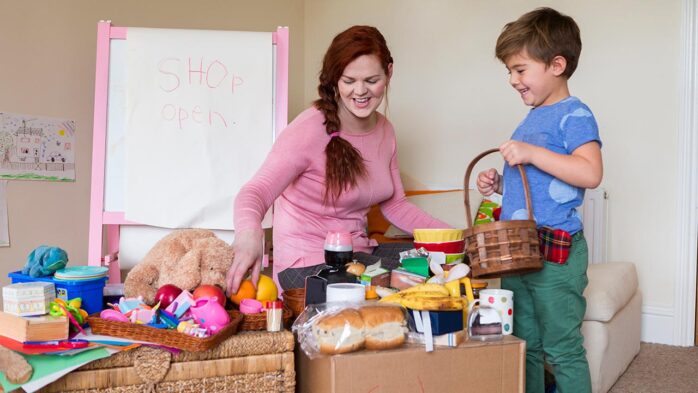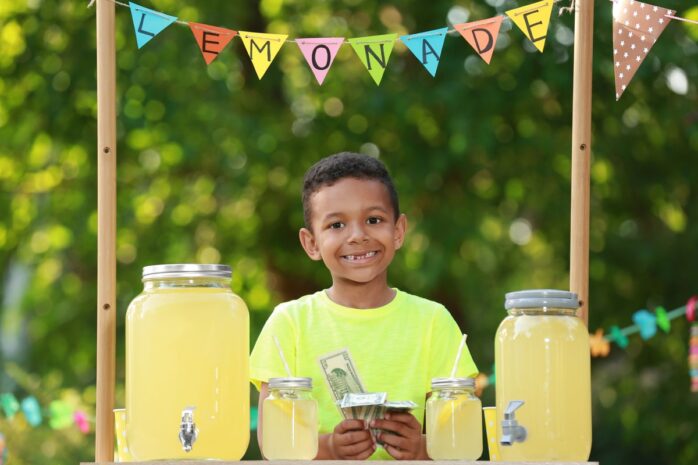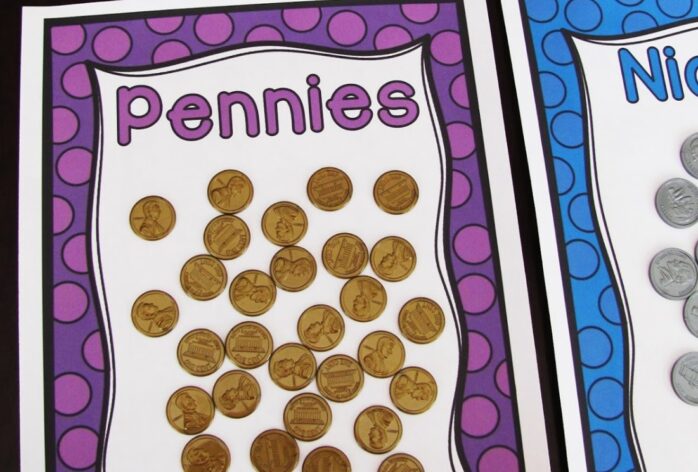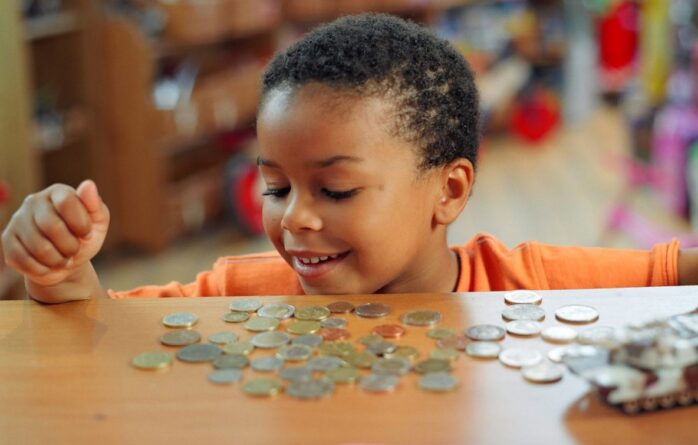Money and personal finance are crucial skills for everyone. However, for children, these concepts can sometimes seem abstract or uninteresting. By incorporating creative methods, parents and educators can instill a sense of financial responsibility and understanding in kids from a young age.
Here are 20 innovative ways to teach children about money and personal finance.
Engaging Stories and Books
Reading is a fundamental way to learn. There are numerous children’s books available that focus on money management and financial decision-making.
Through relatable characters and engaging narratives, these stories simplify complex financial concepts into digestible lessons that kids can understand and apply in their daily lives. Check out My First Finance Book.
Role-Playing Games

Kids love to play pretend, and role-playing games offer a fantastic avenue to teach financial literacy.
Create a mini-economy at home or in the classroom, where kids can earn, spend, and save pretend currency. This hands-on approach helps children understand the value of money and the importance of budgeting and saving.
Family Budget Meetings
Involving kids in family budget meetings can provide real-world financial insight. Discuss income, expenses, savings, and financial goals in a simple way that they can comprehend.
This transparency helps kids grasp the reality of financial management and the impact of financial decisions.
Real-Life Shopping Experiences
Shopping trips are practical lessons in spending and budgeting. Involve kids in the decision-making process, from comparing prices to understanding discounts and making purchase choices within a budget.
These experiences teach them the value of money and the importance of making informed spending decisions.
Educational Video Games
Leveraging technology, educational video games can make learning about finance fun and interactive.
Many games simulate economic situations and decision-making processes, offering kids a safe environment to practice and understand financial concepts.
Setting Up a Lemonade Stand
A classic approach, setting up a lemonade stand or a small business teaches kids about earning, investing, pricing, profit, and loss.
It’s a hands-on experience in entrepreneurship and financial management, fostering skills like calculation, customer service, and strategic thinking.

Financial Field Trips
Organize visits to banks, credit unions, or financial institutions. Many offer educational programs for kids.
These trips can demystify financial establishments and processes, making the concept of banking, saving, and investing more tangible and less intimidating for children.
Arts and Crafts
Integrate arts and crafts to make learning about money more visually appealing. Activities like designing their own currency, creating piggy banks, or making budgeting charts can be both fun and educational. This method helps to reinforce financial concepts through creativity.
Charity and Giving
Teaching kids about charity and the importance of giving is an essential aspect of financial education. Encourage them to allocate a part of their allowance or earnings to charity.
This practice instills values of empathy, generosity, and social responsibility.
Savings Goals and Rewards
Setting savings goals and rewarding kids when they reach them can be a powerful motivator.
This teaches them the discipline and satisfaction of saving towards a specific target, whether it’s a toy, a book, or a special outing.
Family Financial Challenges
Create family challenges, like a no-spend weekend or saving a certain amount of money over a month. These challenges can be fun and promote financial awareness and teamwork. It encourages kids to think creatively about how to minimize expenses and maximize savings.
Interactive Storytelling

Use storytelling to make financial concepts come alive. Create a narrative where children are the protagonists dealing with money-related challenges.
This interactive approach can involve decisions like saving for an item, budgeting for a family trip, or managing unexpected expenses. By actively participating in the story, kids learn the consequences of financial decisions in a controlled, story-driven environment.
Money-Themed Board Games
Board games are a classic tool for learning while having fun. Games like Monopoly or The Game of Life can teach children about earning, spending, saving, and investing in an engaging way.
These games simplify complex financial concepts, making them accessible and enjoyable for children.
Cooking and Budgeting
Involve kids in meal planning and cooking. Give them a budget and let them help plan meals for the week.
This activity not only teaches them about the costs of groceries and the value of meal planning but also provides practical lessons in budgeting and resource allocation.
Financial DIY Projects
Encourage kids to undertake do-it-yourself projects that have financial implications, such as building a piggy bank or designing a simple budget tracker. These projects blend creativity with practical financial learning, making the process enjoyable and memorable.
Guided Online Research
Use the internet to research financial topics. Guide kids to look up information about currencies of the world, historical figures on banknotes, or how banks work.
This method combines technology with learning, making the exploration of finance engaging and interactive.
Money-Themed Art

Create art projects focused on money. This could include drawing their dream home and calculating its cost, or creating collages out of old financial newspapers and magazines.
Through these activities, children engage with financial concepts in a visually expressive way.
Understanding Needs vs. Wants
Teach kids the difference between needs and wants. Create scenarios or use real-life situations to help them categorize expenses into needs (essentials for living) and wants (extras that are nice to have).
This lesson is foundational for budgeting and responsible spending.
Community Sales Participation
Participate in community yard sales or charity events. Let kids be involved in pricing items, handling cash, and even negotiating. These real-life sales experiences are excellent for understanding the value of items and the basics of commerce.
Tracking and Reflecting on Expenses
Encourage kids to track their expenses over a period. Provide them with a simple journal or a digital app to record their spending.
Regularly discuss these records, helping them reflect on their spending patterns and make more informed financial decisions in the future.
End Note

By incorporating these additional methods, children can gain a comprehensive and practical understanding of money and personal finance.
These strategies not only teach financial literacy but also foster critical thinking, decision-making, and practical life skills, paving the way for a financially responsible adulthood.



















